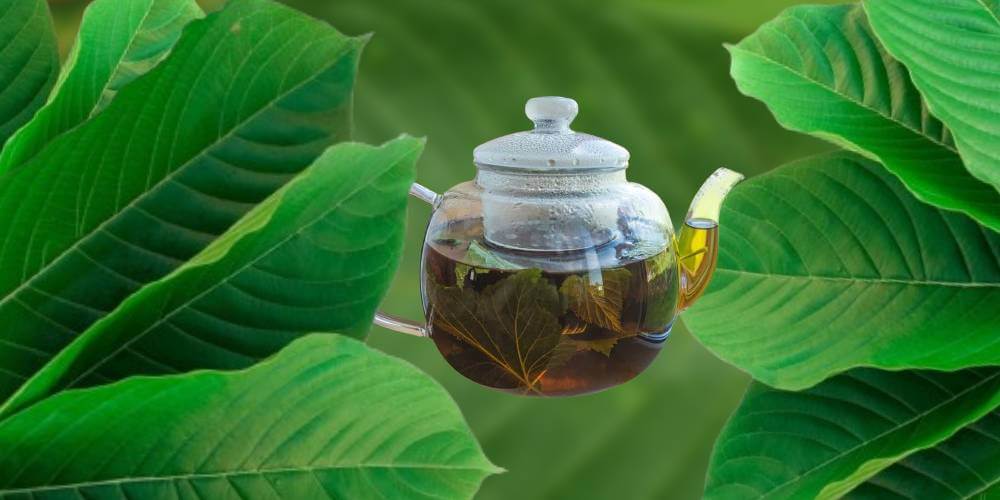In recent years, there has been a growing interest in natural remedies and alternative wellness supplements. Amid this trend, two herbal products have captured significant attention: kava and kratom. These plants have been used for centuries in their native regions and are now gaining popularity worldwide for their unique effects and benefits. However, while both are celebrated for their therapeutic properties, they are often confused due to their somewhat similar applications in promoting relaxation and well-being.
Kava and kratom are two popular herbal supplements, often confused but distinctly different. This article will explore their origins, uses, legal status, preparation methods, cultural significance, and safety considerations.
The aim is to clarify misconceptions and provide a comprehensive understanding of kava and kratom for those considering their use.
Origins and Botanical Background
Kava, known scientifically as Piper methysticum, is a tropical plant native to the South Pacific Islands.
This plant has been a cornerstone in the cultures of Fiji, Vanuatu, Tonga, and Samoa for centuries. Its use dates back over 3,000 years, with a rich history deeply intertwined with the social and spiritual practices of these island communities.
Kava's roots are traditionally prepared into a beverage that plays a central role in social and ceremonial gatherings. It is consumed during important events, including weddings, funerals, and community meetings, symbolizing unity and harmony.
Kava is a hardy shrub that grows up to three meters tall, featuring large, heart-shaped leaves and woody stems. The most valued part of the plant is its root, which contains the active compounds known as kavalactones. These kavalactones are responsible for the plant's calming and euphoric effects.
Kratom, scientifically named Mitragyna speciosa, is a tropical tree indigenous to Southeast Asia.
This plant thrives in the lush, humid regions of Thailand, Indonesia, and Malaysia. Kratom has been an integral part of these cultures for centuries, used both as a traditional medicine and a stimulant.
For centuries, kratom leaves have been used in traditional medicine and as a stimulant to increase energy and stamina, particularly among laborers. It was often chewed or brewed into a tea to alleviate pain, combat fatigue, and improve productivity.
Kratom trees can reach heights of up to 30 meters, with large, glossy leaves that contain the alkaloids responsible for its effects. The leaves are typically harvested and used in various forms. The primary active compounds in kratom are mitragynine and 7-hydroxymitragynine, which interact with opioid receptors in the brain, producing both stimulant and analgesic effects depending on the dosage.
Uses and Benefits
Kava is primarily consumed as a social beverage, known for its calming effects. It's also used in traditional ceremonies to foster a sense of community and relaxation. In modern times, kava is often used as a natural remedy for anxiety, stress, and insomnia due to its soothing properties.
In Pacific Islander communities, kava is more than just a drink; it is a key component of cultural rituals and social gatherings. For example, the Yaqona ceremony in Fiji and the ‘Ava ceremony in Samoa are integral to community bonding and spiritual practices. These ceremonies involve specific protocols and chants, underscoring the drink's importance in maintaining social order and cultural continuity.
Kratom is traditionally used for its medicinal properties, such as pain relief, and as an energy booster. It also plays a role in social settings, providing a mild stimulant effect that can enhance social interactions. In contemporary settings, kratom is often utilized to manage chronic pain, improve mood, and as an alternative to opioids for those seeking to manage withdrawal symptoms.
In Southeast Asian cultures, kratom has long been used by workers for its stamina-boosting properties. It is also integrated into local traditions and social practices, contributing to its cultural significance. In rural areas, kratom is often chewed in social groups, fostering a sense of camaraderie and mutual support among users.

Legal Status
Kava's legal status varies globally. It is generally legal in most parts of the world, though some European countries and North American regions have imposed restrictions due to concerns over liver toxicity. In countries like Germany and Canada, kava was temporarily banned but has since been re-evaluated and reintroduced under strict quality controls.
Regulations on kava focus on quality standards to ensure safe consumption. Import and export laws may vary, requiring thorough checks to meet health and safety standards. For instance, in the United States, kava products must comply with FDA regulations to ensure they are safe for consumption.
Kratom's legal status is more complex and varies significantly across countries and even within regions of the same country. It is banned in some countries, regulated in others, and legal in some US states while illegal in others. For example, kratom is legal in Thailand after a long-standing ban but remains illegal in Malaysia.
Specific bans on kratom often categorize it as a controlled substance due to concerns over its potential for dependency and abuse. Where it is legal, there may be regulations regarding its sale and use to ensure consumer safety. In the United States, the legal status of kratom varies by state, with some states implementing strict regulations and others allowing its sale without significant restrictions.
Preparation and Consumption Methods
Traditionally, kava is prepared by grinding the roots into a fine powder, mixing it with water, and then straining the mixture to produce a drink. This method is labor-intensive but ensures the maximum extraction of kavalactones.
Modern methods of kava preparation include instant kava powder, capsules, and tinctures, making it more accessible and convenient for contemporary users. These products often undergo rigorous processing to ensure consistent quality and potency.
Kava can be consumed as a traditional drink, or taken as an extract or supplement, depending on personal preference and the desired effect. Kava bars often serve kava in various forms, catering to different tastes and preferences.
Traditionally, kratom leaves are chewed fresh, or dried and brewed into a tea. Chewing the leaves releases the active compounds directly into the bloodstream, providing quick effects.
Today, kratom is available in various forms including powder, capsules, and extracts, catering to different preferences and needs. These products vary in potency, allowing users to choose based on their desired intensity of effects.
Kratom can be consumed as a tea, in capsule form, or mixed into beverages, providing multiple ways to incorporate it into one's routine. Some users blend kratom powder into smoothies or other drinks to mask its bitter taste.
Cultural Significance and Practices
Kava holds a deep cultural significance in the Pacific Islands. The Yaqona ceremony in Fiji and the ‘Ava ceremony in Samoa are vital traditions that mark important social and spiritual events. These ceremonies involve specific rituals, chants, and the communal sharing of kava, reinforcing social bonds and cultural identity.
In modern times, kava bars have emerged, offering a space for community gatherings and socializing, much like the traditional settings. These bars provide a relaxed environment where people can enjoy kava and engage in conversation, fostering a sense of community.
Historically, kava has played a crucial role in the social structure of Pacific Islander societies. It features prominently in traditional stories and myths, underscoring its importance. Kava was often used to resolve conflicts, seal agreements, and honor guests, highlighting its role in maintaining social harmony and order.
In Southeast Asia, kratom has been traditionally used by laborers to enhance stamina and by communities to foster social bonds. Chewing kratom leaves was a common practice among workers in fields and plantations, providing them with the energy needed to endure long hours of labor.
Kratom is deeply embedded in local traditions and folklore, reflecting its longstanding presence and cultural importance. Stories and myths often depict kratom as a plant with mystical properties, revered for its healing and energizing effects.
In recent years, kratom cafes have sprung up, offering a modern twist on traditional use. These cafes provide a social space where people can consume kratom in various forms and share their experiences. Online communities also play a significant role in sharing information, experiences, and support among kratom users.
Safety and Considerations

While kava is generally considered safe when consumed in moderation, there have been concerns about potential liver toxicity. It is crucial to adhere to recommended dosages and avoid prolonged use. Studies have shown that the risk of liver damage is significantly reduced when kava is sourced from noble cultivars and prepared properly.
Ensuring the quality of kava is essential. Proper sourcing and preparation standards help mitigate health risks and enhance the benefits of this traditional remedy. Consumers should seek products that are certified for quality and purity to ensure they are safe to consume.
Kratom's safety profile is more contentious due to its potential for dependency and the varying alkaloid content in different strains. Users should be cautious and informed about the risks. Regular use of high doses can lead to dependency and withdrawal symptoms similar to those of opioids.
Quality control is critical for kratom as well. Concerns over sourcing and legal implications necessitate careful consideration before use. It is important to purchase kratom from reputable vendors who test their products for purity and potency to avoid contamination and ensure safety.
Conclusion
Kava and kratom, while both herbal supplements with roots in traditional use, are distinctly different in their origins, uses, legal status, and cultural significance. Kava hails from the South Pacific, known for its calming effects and ceremonial use, while kratom comes from Southeast Asia, valued for its stimulating properties and traditional medicinal use.
Making informed decisions about these supplements is vital. Understanding their cultural origins and respecting their traditional uses can enhance the experience and ensure responsible consumption. Both kava and kratom offer unique benefits, but they also come with potential risks that should be carefully considered.
For those considering kava or kratom, it is crucial to conduct thorough research, understand the legal and health aspects, and source these products from reputable suppliers. Always consult with a healthcare professional if you have any concerns or pre-existing conditions.
Common Questions
-
Can you mix kava and kratom?
- Mixing kava and kratom is generally not recommended due to their differing effects and potential health risks. Consult with a healthcare professional before combining any supplements.
-
Where can I legally purchase kava and kratom?
- Kava can be purchased in most health food stores and online retailers, subject to regional regulations. Kratom's legality varies, so it is important to check local laws. In places where it is legal, it can be found in specialty stores and online.
-
What are the primary differences between kava and kratom in terms of effects?
- Kava is primarily known for its relaxing and sedative effects, making it useful for reducing anxiety and promoting sleep. Kratom, on the other hand, has both stimulant and analgesic properties, depending on the dosage. Low doses of kratom tend to be stimulating, while higher doses have sedative and pain-relieving effects.
-
Are there any long-term health effects associated with kava and kratom use?
- Long-term use of kava has been associated with liver toxicity in some cases, especially when consumed in large amounts or poor-quality preparations. Long-term kratom use can lead to dependency and potential withdrawal symptoms. It is essential to use both substances responsibly and under the guidance of a healthcare professional.
-
How can I ensure the quality and safety of kava and kratom products?
- To ensure quality and safety, purchase kava and kratom from reputable vendors who provide third-party lab testing for their products. Look for certifications and read reviews from other consumers to gauge the reliability of the supplier.
By understanding the differences between kava and kratom, individuals can make informed choices that align with their wellness goals and respect the cultural heritage of these powerful plants.



